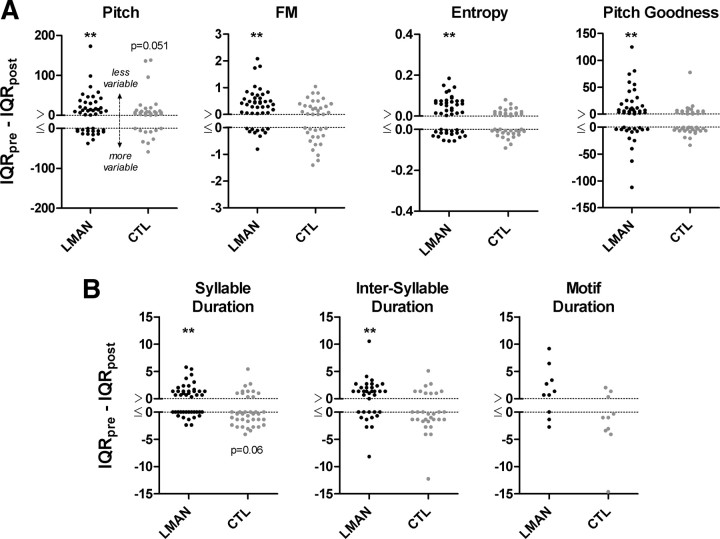Figure 2.
Column scatter plots show difference scores for postoperative variation in all measured spectral (A) and temporal (B) features of song for adult birds that received LMAN ablation (black data points) or control surgery (gray data points). Positive values indicate less postoperative variation whereas negative values indicate more postoperative variation. Stars above clusters of data points indicate significant (p < 0.01) postoperative change in variation (Wilcoxon signed-rank tests). A, LMAN ablation (n = 45 syllables, each data point is one syllable) produced a significant reduction in the dispersion of all measured spectral features whereas control surgery (n = 38 syllables) had no significant effect on the dispersion of syllable FM, entropy, or pitch goodness, but produced a near-significant trend for a reduction in the dispersion of syllable pitch (p = 0.051). n = 4 outlying syllable values were excluded from the graph for pitch to optimize illustration of the distribution of the data (−262.25, −248.56, 307.89 from the CTL group and 247.25 from the LMAN group). B, LMAN ablation produced a significant reduction in the dispersion of syllable duration values (n = 45) and intersyllable duration values (n = 35), but did not alter the dispersion of motif duration (n = 10). Control surgery produced a near-significant increase (p = 0.06) in the dispersion of syllable duration values (n = 38) but did not significantly alter the dispersion of intersyllable duration (n = 30) or motif duration (n = 10).

